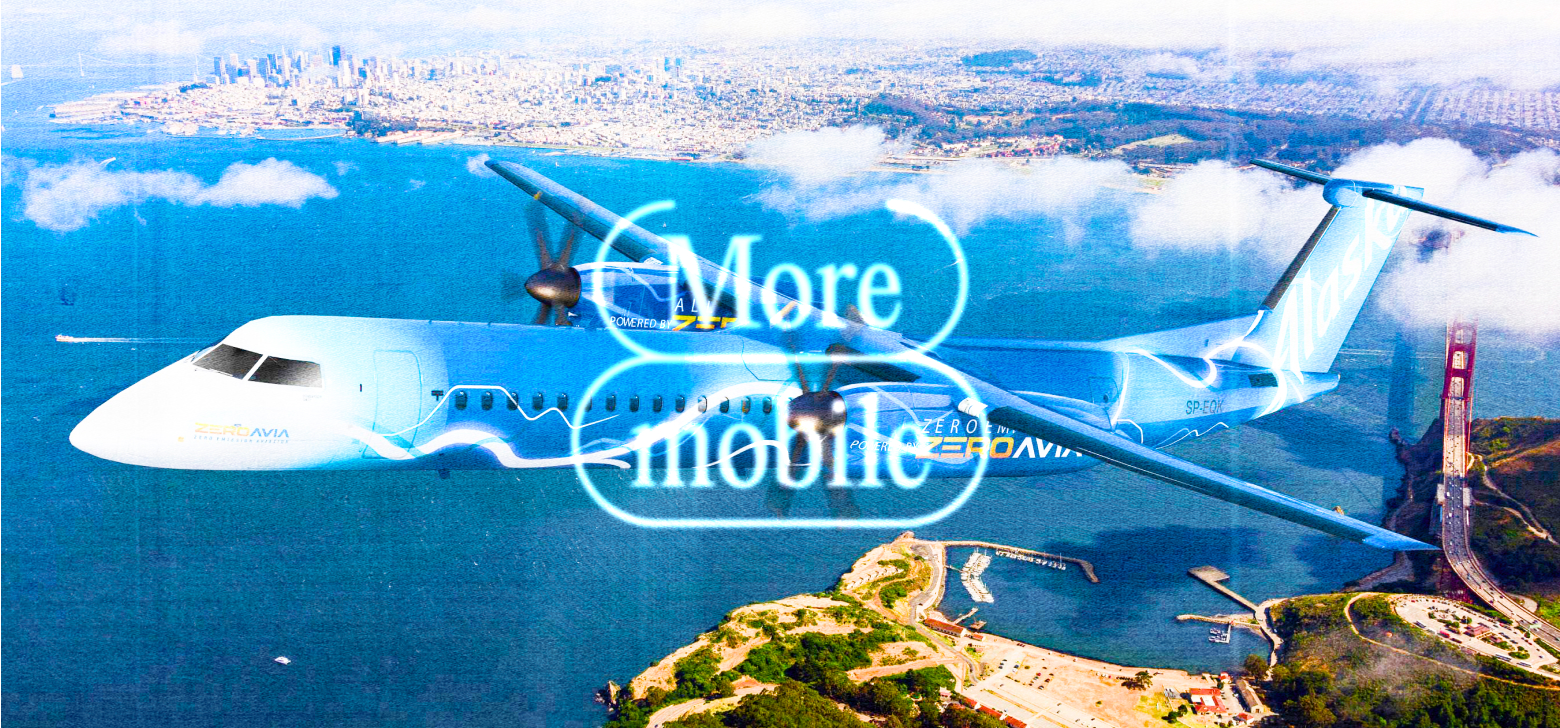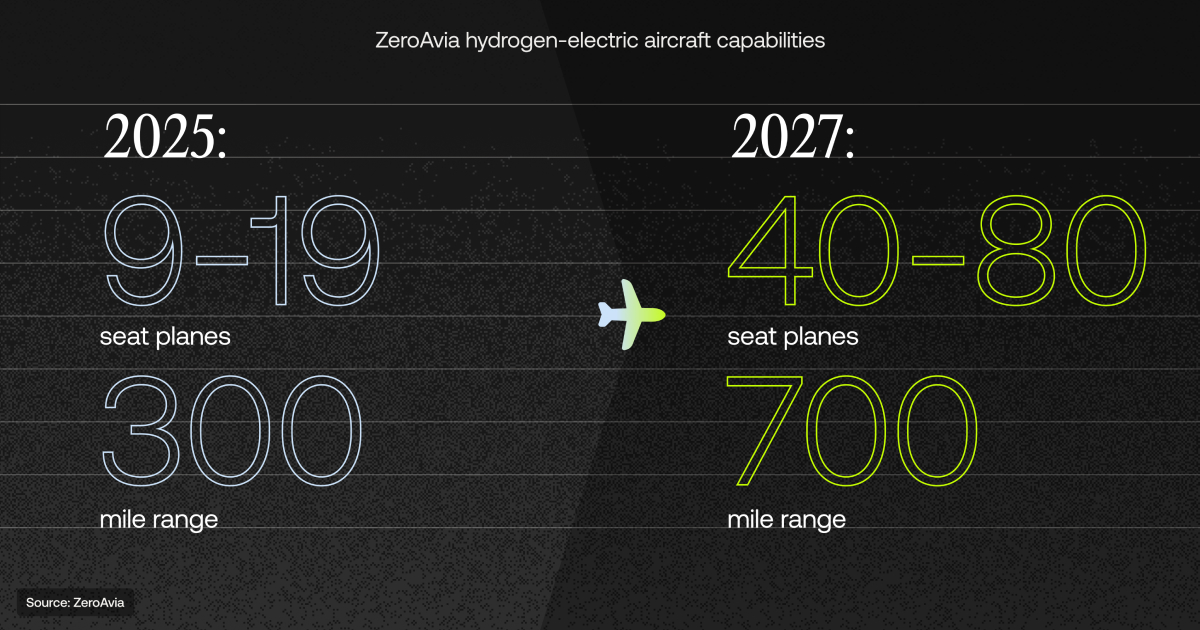The global airline industry contributes 2% of all energy-related carbon emissions annually and commercial flights connect people around the world. Now, we need to make them more sustainable.
Sustainable aviation fuel (SAF), a safe, drop-in fuel that can be used on aircrafts, is the best opportunity the aviation industry has to decarbonize. However, it is not at the scale, scope, and cost needed to realize its full potential, so other solutions are increasingly important. In 2021, Alaska Airlines partnered with and invested in ZeroAvia, a start-up focused on creating zero-emission airplanes that use hydrogen-electric propulsion technology to power a clean aviation future with an added bonus: it would also significantly lower fuel and engine maintenance costs for airlines.
Now ZeroAvia is focused on proving the technology’s viability. As a major U.S. airline, Alaska is well-poised to support the deployment of zero-emission aircraft in a smaller test. By showing that hydrogen-electric aircraft are capable of shorter regional flights, the companies believe they’ll be able to validate the technology’s safe use for longer flights.




